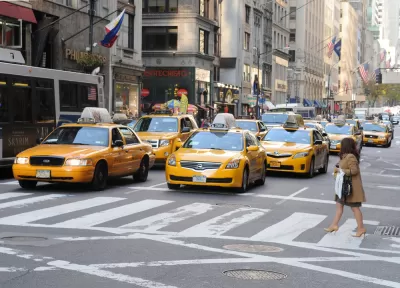With experts predicting widespread autonomous vehicle (AV) adoption in the not-too-distant-future, many policymakers, designers, and ordinary citizens are left scratching their heads, uncertain of what to expect and how to prepare.

We asked John Eddy, who leads Arup’s research into the impact of AVs on the built environment, and Ryan Falconer, head of the firm’s Canadian transportation consulting business, to stage a mock debate about the risks and rewards of a driverless future.
Let’s start with active transportation. John, will AVs make our cities better for pedestrians and cyclists? How will they encourage people to get out of cars and use active transportation, universally acknowledged to be better from the standpoint of public health and greenhouse gas emissions?
John: There’s no question we’ll be able to create a much safer environment for active travel. Shared autonomous vehicles will need less parking and road space than today’s cars, so we’ll be able to devote more space to pedestrians and cyclists. And although the price of car rides should drop with driverless cars, I don’t think that’s going to stop people from using active transportation. There are multiple reasons why somebody walks or rides a bike, and a lot of it comes down to personal preference.
Ryan: I think the convenience of autonomous vehicles will disincentivize people from using active transit. I’ll link that very strongly to one of the points we’ll get to momentarily: sprawl, which will discourage people from taking active transport because of the travel distances involved.
FULL STORY: A civil debate: Are driverless cards good for cities?

Alabama: Trump Terminates Settlements for Black Communities Harmed By Raw Sewage
Trump deemed the landmark civil rights agreement “illegal DEI and environmental justice policy.”

Study: Maui’s Plan to Convert Vacation Rentals to Long-Term Housing Could Cause Nearly $1 Billion Economic Loss
The plan would reduce visitor accommodation by 25% resulting in 1,900 jobs lost.

Planetizen Federal Action Tracker
A weekly monitor of how Trump’s orders and actions are impacting planners and planning in America.

Wind Energy on the Rise Despite Federal Policy Reversal
The Trump administration is revoking federal support for renewable energy, but demand for new projects continues unabated.

Passengers Flock to Caltrain After Electrification
The new electric trains are running faster and more reliably, leading to strong ridership growth on the Bay Area rail system.

Texas Churches Rally Behind ‘Yes in God’s Back Yard’ Legislation
Religious leaders want the state to reduce zoning regulations to streamline leasing church-owned land to housing developers.
Urban Design for Planners 1: Software Tools
This six-course series explores essential urban design concepts using open source software and equips planners with the tools they need to participate fully in the urban design process.
Planning for Universal Design
Learn the tools for implementing Universal Design in planning regulations.
Caltrans
Smith Gee Studio
Institute for Housing and Urban Development Studies (IHS)
City of Grandview
Harvard GSD Executive Education
Toledo-Lucas County Plan Commissions
Salt Lake City
NYU Wagner Graduate School of Public Service




























